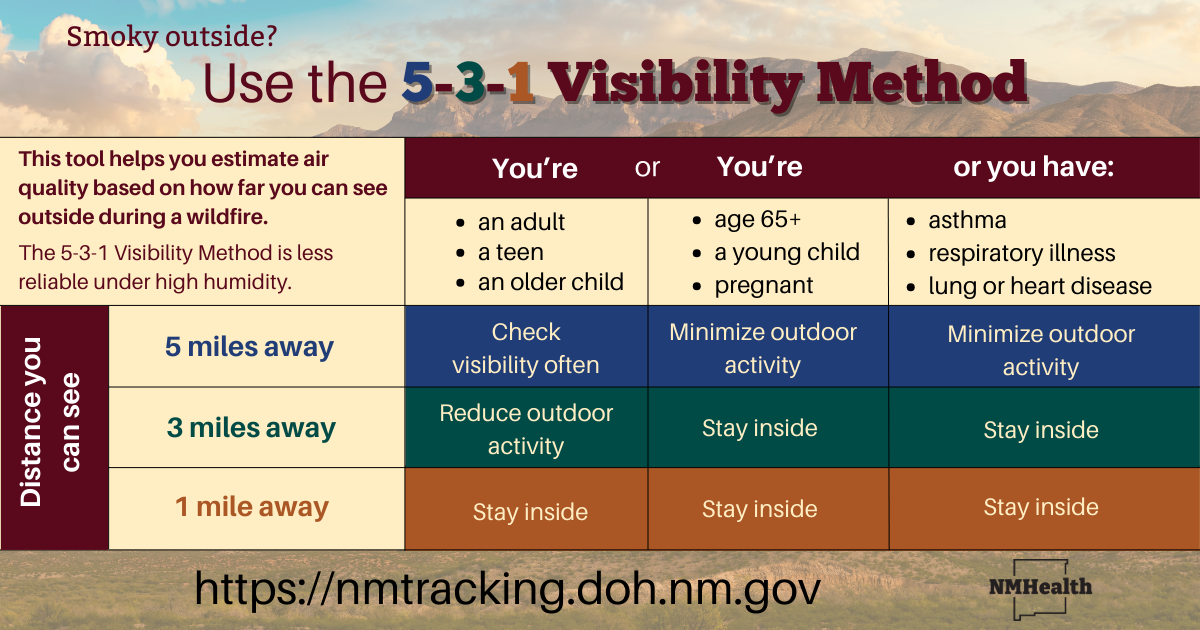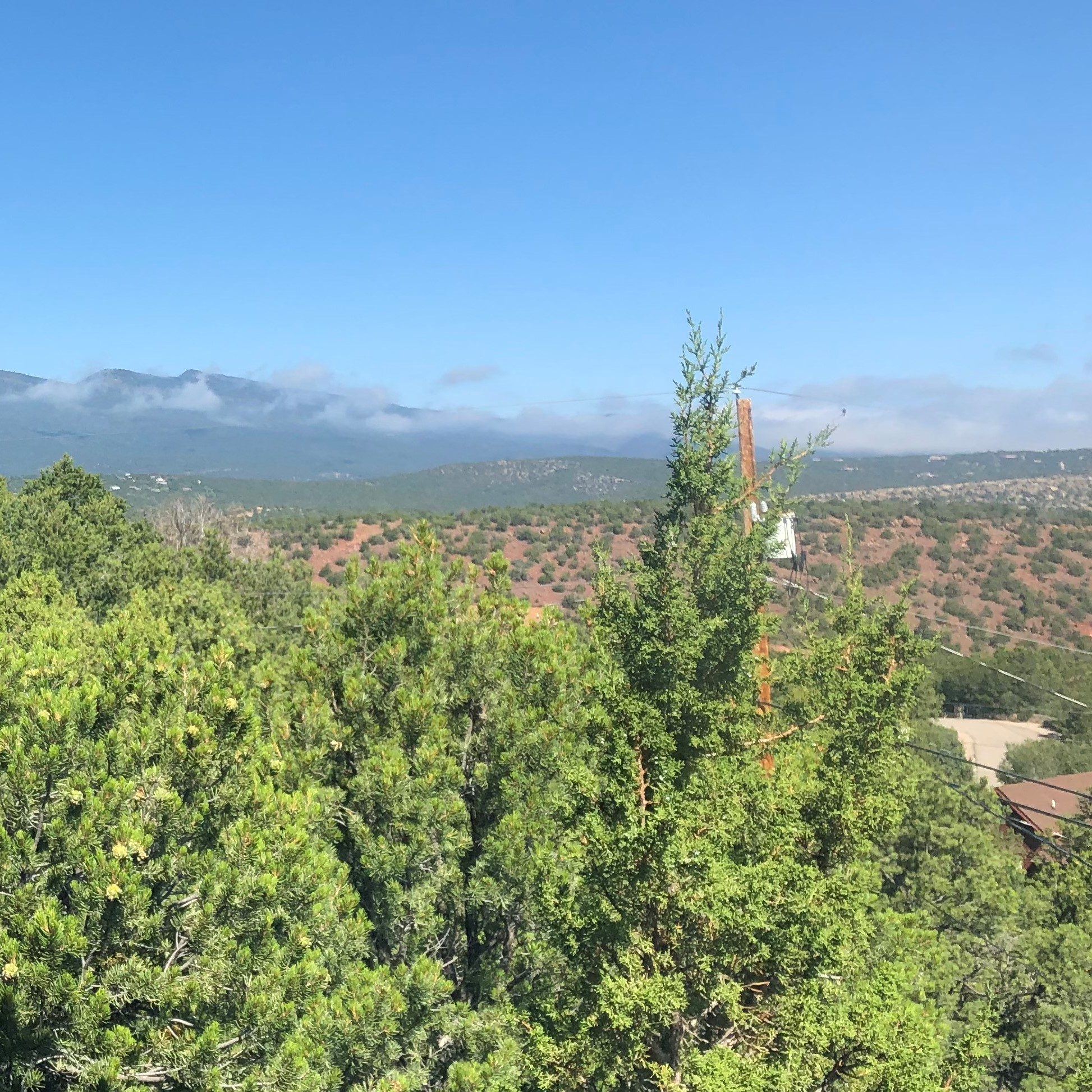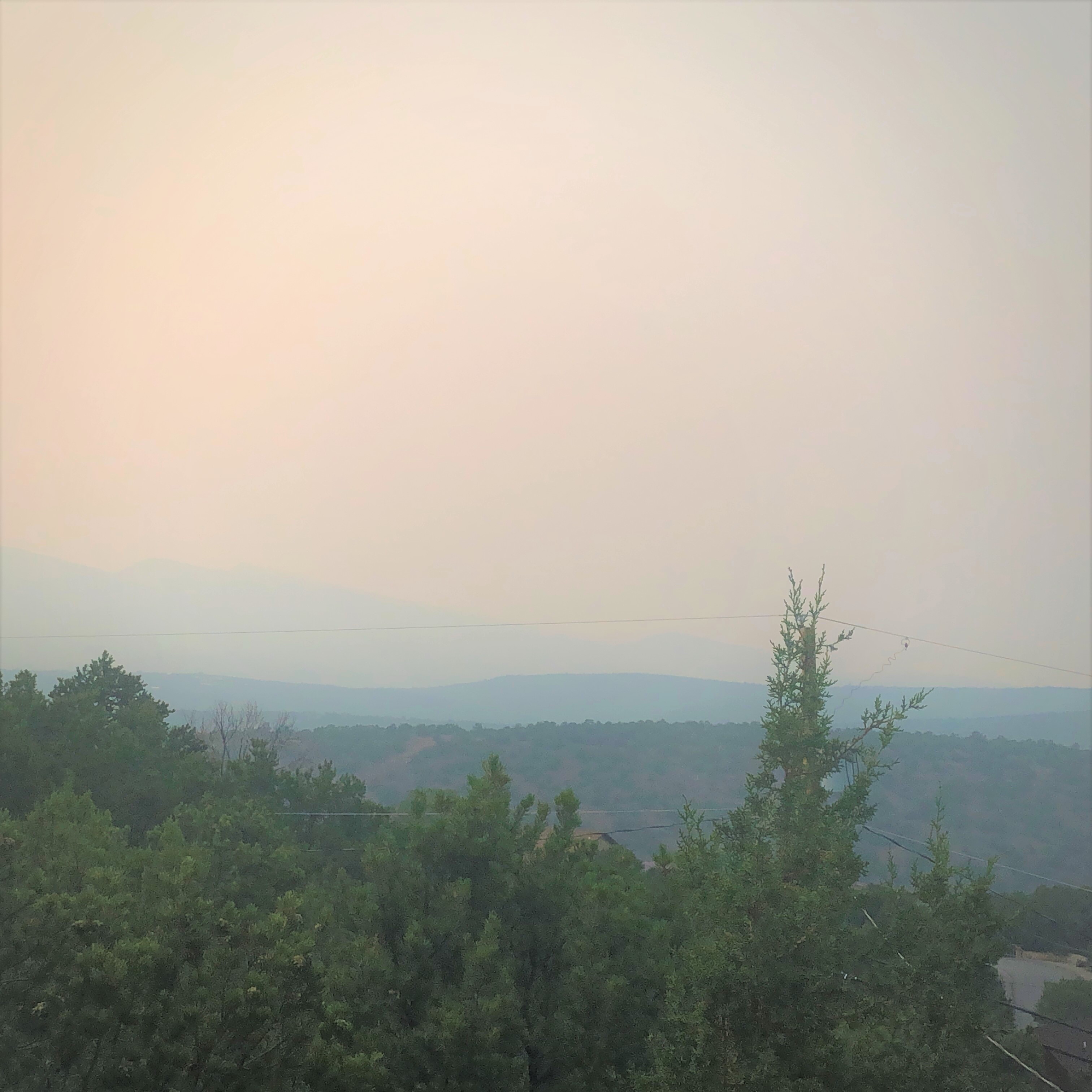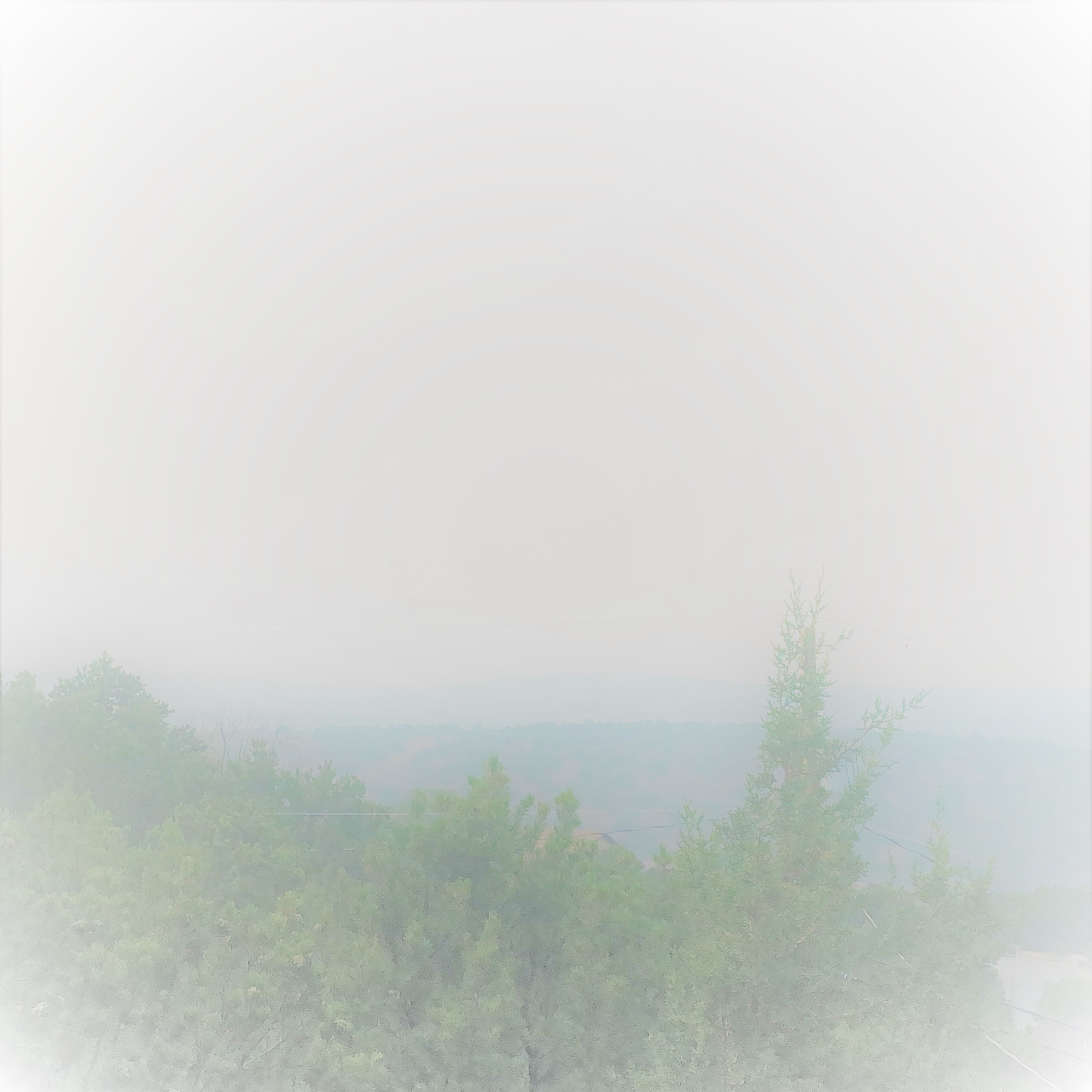Fires, Smoke, and Health
New Mexico Smoke from Fires and Your Health Toolkit

State Agency Press release – From the New Mexico Department of Health
New Mexico’s climate offers great outdoor opportunities for work and recreation throughout the year. However, during wildfire season and prescribed burns the air quality can change rapidly, including when smoke comes from neighboring states. This means you might need to make quick decisions about being outside.
Do you know what to do when it becomes smoky? How does smoke affect health? This webpage serves as a toolkit to help you make those decisions. Get health protection tips and learn how to use the 5-3-1 Visibility Method. Next, learn which health symptoms are caused by smoke. Plus, get additional tips for staying safe and healthy on smoky days and download the resources.
Protect Your Health on Smoky Days
The best way to protect yourself during smoky days is to avoid breathing in smoke. Even if you can’t smell the smoke or if it does not smell too bad that does not mean the air quality is safe. Here are quick tips:
- Staying indoors during smoky days is one of the best things you can do.
- When you don’t have a monitor in your area, use the 5-3-1 Visibility Method created in New Mexico to estimate the air quality and the actions you should take based on your health circumstances and age. We detail how you can use this below.
- Pay attention to local air quality alerts to plan your day and travel. Air quality reports are often posted on this site in the Newsroom and are also available through local news media and social media.
- Keep your indoor air clean by closing windows and doors.
- Create a “clean room” in your home (see Downloads and Resources for more information).
Use the 5-3-1 Visibility Method to estimate air quality
Using visibility is an easy way to gauge if it is okay to go outside or if is okay to stay outside especially in the absence of air quality monitors and when you do not have access to technology or air quality alerts, such as when you are in remote areas.
To help you make the decision, the New Mexico Department of Health Environmental Public Health Tracking Program and its locally based state and federal partners specializing in air quality and wildfire management, created the 5-3-1 Visibility Method. It incorporates mileage and landmarks to help you determine visibility. This method can also be used by event organizers, coaches, and recreational leaders to decide if practice or the game should go on or be postponed.

If it is smoky outside find out how far you can see by choosing landmarks to look at it.
Pick some landmarks you are familiar with. Then see how well you can see those. Facing away from the sun, look for landmarks such as mountains, mesas, hills, buildings, water tanks, windmills, etc. that are about 5 miles, 3 miles and 1 mile away. Use those mile ranges to help you estimate visibility. If these landmarks are not easy to see in the five, three, and one-mile ranges you can decide what to do based on your health conditions and age.
Where are you? NM EPHT created the 5-3-1 Buffer Tool to help you estimate the distance of landmarks by using your phone, computer or device right where you are.
View The 5-3-1 Buffer Map
Can you see landmarks 5 miles away?
Young children, adults over age 65, pregnant women, and people with heart and/or lung disease, asthma or other respiratory illness:
If you can see less than 5 miles, the air quality is unhealthy for you, and you will need to minimize outdoor activity.
You should reschedule outdoor recreational activities for a day with better air quality.
Adults in Good Health:
It is okay for adults in good health to be out and about.
You should periodically check visibility especially when fires are nearby.

Decision-Making for Event, Community, and Event Leaders, Coaches, and P.E. Teachers:
If your activity involves young children, adults over age 65, pregnant women, and people with heart and/or lung disease, asthma or other respiratory illness, then move your event indoors.
- Try to keep the indoor air as clean as possible by not allowing use of air fresheners (fragrances), candles and wax melts, chemicals, cigarettes, vapor cigarettes or anything else that could compromise the air quality.
- If it is warm, consider moving it into a place that is cooled with air conditioning (not swamp/evaporative coolers).
- If you cannot move your event indoors, then reschedule it for a day with better air quality.
Can you see landmarks 3 miles away?
Young children, adults over age 65, pregnant women, and people with heart and/or lung disease, asthma or other respiratory illness:
If you can see less than 3 miles, the air quality is unhealthy for you and should stay indoors. All outdoor activities should be avoided, including running errands.
Adults in Good Health:
Stay indoors as much as possible.
- Only be outside momentarily to run important errands.
- Outdoor workers should be moved to work that does not involved being outdoors.
- If you are camping, hiking, fishing, or ranching, move to a safer place with better visibility and try to get to an indoor space.

Decision-Making for Event, Community, and Event Leaders, Coaches, and P.E. Teachers:
All outdoor recreational activities, sporting events and outdoor community events should be rescheduled for a day with better air quality or moved indoors if possible.
Can you see landmarks less than 1 mile away?
All People:
If you can see less than 1 mile that means the air quality is unhealthy for everyone. You should remain indoors and avoid all outdoor activities including running errands, walking, and biking.
Unless an evacuation has been issued, stay inside your home, indoor workplace, or in a safe shelter.
Decision-Making for Event, Community and Event Leaders, Coaches, and P.E. Teachers:
Cancel or reschedule all events. Poor visibility outdoors means it could be dangerous for participants to drive to your event even if you move it indoors. Being outdoors including briefly walking outside could be unhealthy during this time.

At anytime
At any time, regardless of the visibility, if you are feeling as though you are having health effects from smoke, take precautions to avoid further exposure to smoke and consult a healthcare professional as needed.
Metodo de Visibilidad 5-3-1
Un incendio forestal se puede esparcir rapidamente y cambiar la calidad del aire enseguida. Aprenda como proteger su salud cuando esto suceda.
Paso 1: Determine cuanto humo hay basado en cuan lejos usted pueda ver (en millas).
Paso 2: Decida que hacer basado en cuan lejos usted puede ver, su edad, y condiciones de salud.
Si usted puede ver:
- menos de 5 millas, la calidad el aire no es saludable para ninos pequenos, adultos mayores de 65 anos, mujeres embarazadas, y personas con condiciones de corazon y/o de pulmon, asma u otras enfermedades respiratorias. Estas personas deben minimizar sus actividades recreacionales al aire libre o reprogramarlas para un dia con mejor calidad de aire.
- como 3 millas, ninos pequenos, adultos mayores de 65 anos, mujeres embarazadas y personas con condiciones de corazon y/o de pulmon, asma u otras enfermedades respiratorias deben evitar todas las actividades al aire libre y permanecer adentro. Las demas personas deben minimizar sus actividades al aire libre.
- menos de 1 milla; la calidad del aire no es saludable para nadie. Todas las personas deben permanecer adentro.
No importa cuan lejos usted pueda ver, si usted siente efectos en su salud debido al humo, permanezca adentro o vaya a un area con mejor calidad de aire. Usted debe ver a su doctor o personal del cuidado de la salud si es necesario.
Metodo de Visibilidad 5-3-1 es una campana del Departamento de Salud de Nuevo Mexico y sus socios estatales y federales.
More Tips for Schools, Community Leaders, Event, Recreation and Sports Organizers, and Employers
If you are a community leader, an event/sports organizer, physical education teacher, someone who serves a sensitive population, or supervises outdoor work:
- Learn how to use 5-3-1 Visibility Method to decide if you should move your activity and operations indoors, postpone or cancel.
- Have a back-up plan to move events or work indoors when you can.
- For large events, have a communications plan in place to inform participants, eventgoers and spectators.
Communicate
As you postpone, reschedule, or cancel your event, let the community or participants know that these changes were done to protect their health.
- Use your local means of mass communication to let your community know of changes in the schedule. Common ways to communicate with you participates include phone trees, e-mail listserv, text messages.
- Use social media feeds such as an event page or a team page to announce the change of plans.
- Use your local media such as the newspaper, radio and television stations, and online news outlets to get the word out about the change of plans.
- Direct your participants to nmfireinfo.com to learn about fires in the state and to nmtracking.doh.nm.gov to learn how they can protect their health on smoky days.
Educate
Help educate your participants on how they can make decision during smoky days. We provide downloadable resources such as signs and flyers in the “Resources” below.
- You may post these in senior and community centers, near trailheads, campgrounds, libraries, worksites, community gathering areas, schools, sports fields, and medical centers.
- Share these resources as part of patient education to sensitive populations.
- Use these in door-to-door education during wildfires if you are frontline worker and response professional.
- Ask people to keep these handy, such as posting it on refrigerators and near doorways, so they may know what to do when it quickly becomes smoky outside.
Tips for Workplaces
Make sure staff understand how to use the 5-3-1 Visibility Method.
- Adopt it as workplace policy to make quick decisions in the absence of air quality monitors.
- Examples of key people you should train in the 5-3-1 Visibility Method include: people who provide services for sensitive populations; physical education teachers; coaches; referees; recreation managers; school or daycare center administrators and teachers; community center or senior center managers; guides for fishing or outdoor excursions; people who manage a city, county, or tribal government; ranch or farm managers; emergency response officials, and site supervisors of outdoor labor.
- Provide a safe indoor workspace for worker who primarily work outdoors.
- For workers who must still be outdoors such as emergency responders and public safety professionals, provide appropriate personal protection equipment.
More about the 5-3-1- Visibility Method
The 5-3-1 Visibility Method has been adopted by entities in other states. Since the southwest United States typically has very low humidity, visibility can be an effective tool to determine if it is healthy to be outside when smoke is present. The visibility test is not appropriate or effective in areas with frequent high humidity, such as the southeastern United States when fog may limit visibility. The 5-3-1 Visibility Method is public campaign from the New Mexico Department of Health’s Environmental Public Health Tracking Program and its state and federal partners.
New Mexico Fire Wildfire Response Video
Health Symptoms Caused by Smoke
While not everyone will have the same sensitivity to wildfire smoke, it’s still best to avoid breathing smoke as much as you can. When smoke is heavy like from a nearby a wildfire, it’s bad for everyone. Smoke is made up of a complex mixture of gases and fine particles produced when wood and other organic materials burn. The biggest health threat comes when people breath in the microscopic smoke particles which can penetrate deep into your lungs causing health problems.
General Symptoms from Smoke
Smoke can trigger a range of symptoms for anyone which may include burning eyes, a runny nose, cough, phlegm, wheezing, and difficulty breathing.
- Regardless of your health and age it always best to reduce exposure to smoke as much as you can.
- Stay hydrated and follow your doctor’s advice about medicines or prescriptions you take.
Who is at most risk?
Smoke may worsen symptoms for people who have pre-existing respiratory conditions.
- People with heart, lung disease, or cardiovascular disease might experience chest pain, palpitations, shortness of breath, or fatigue.
- People with seasonal allergies, asthma, and chronic obstructive pulmonary disease (COPD) including not being able to breathe as deeply or as vigorously as usual, and may experience symptoms such as coughing, phlegm, chest discomfort, wheezing and shortness of breath.
- In addition to avoiding being outside on smoky days, you should follow your health management plan from your health care provider, or if you have asthma, follow your asthma management plan.
- If you develop symptoms which do not respond to your usual medication, contact your health care provider immediately. If you think you are having a heart attack or stroke, dial 9-1-1.
COVID-19 Safety During Smoky Days and Wildland Fires
Smoke from wildfires may cause people to have more severe reactions if they are infected COVID-19. Wildfire smoke is a complex mixture of air pollutants that can harm your health such as irritate your lungs, cause inflammation and may alter immune function that makes it harder to fight COVID-19 and other respiratory infections.
People most prone to risk
- People who have been diagnosed with COVID-19 or another respiratory infection, even after symptoms have resolved.
- People who have pre-existing respiratory conditions such as asthma, chronic obstructive pulmonary disease (COPD), interstitial lung disease (ILD), or lung cancer.
- Anyone at increased risk for COVID-19 infection.
If you have a chronic health condition, work with your healthcare providers to create a management plan for smoky conditions. If you use rescue medications, make sure that you always have an ample supply at home and carry them with you during the wildfire season.
What you should do if you have symptoms
Exposure to wildfire smoke and COVID-19 can both cause respiratory symptoms such as a dry cough, sore throat, or difficulty breathing. If you have severe symptoms such as difficulty breathing or chest pain, call 911 right away or get to an Emergency Department. If you have mild symptoms call your healthcare provider. If you suspect you have COVID-19, see CV.nmhealth.org for guidance.
Ways to reduce smoke exposure and reduce the spread of COVID-19 during smoke events
It is important to and reduce your risk of getting the virus and help reduce the virus spread by following the COVID-19 safety guidelines for New Mexico.
- Follow the recommendations for New Mexico and your county such as wearing masks, social distancing, and frequent hand washing.
- Sign up for vaccinations and testing. Visit CV.nmhealth.org for guidance.
- Continue to wear cloth or paper masks to reduce the COVID-19 spread but you should not rely on these types of masks for smoke protection because smoke particles are too fine to be filtered by such masks. It is best to stay indoors during wildland fires in a place with clean air, such as your home or a workplace that follows COVID-19 safety practices.
The best way to protect against the potentially harmful effects of wildfire smoke is to reduce exposure, improve your indoor air quality or seek cleaner air spaces.
- Use the 5-3-1 Visibility Method, (listed above) to assess air quality conditions in your area.
- Stay indoors as much as you can, such as in your home or workplace.
- You can create a cleaner air space at home to protect yourself from wildfire smoke during the COVID-19 pandemic by following the tips above.
- Finding cleaner air away from your home can be more challenging under physical distancing guidelines because public facilities such as libraries, community centers, and shopping malls might be closed or at limited capacity. It is best to check with these places before you go and to follow the guidelines for reducing COVID-19 spread.
More ways to protect yourself on smoky days
In addition to using the 5-3-1 Visibility Method and staying indoors when it is smoky outside you can do more to protect your health on smoky days.
Keep indoors clean
Staying indoors and keeping the indoor air as clean as possible is the easiest way to protect your lungs when it is smoky outside.
Improve indoor air quality during a smoke event:
- Keep windows and doors closed.
- Stop use of all fragrances such as spray air fresheners, candles, wax melts, and chemically scented household products.
- Don’t use a vacuum cleaner during a smoke event because it can stir up particles already inside your home.
- Turn off electric fragrance dispensers or scented wax melting devices.
- Stop use of anything that burns, such as candles, fireplaces, or gas stoves.
- Avoid use of sprays including cleaning and grooming products.
- Try an air purifier. Several hardware stores sell air purifiers of varying features and price ranges. You can also make a temporary air filter with a box fan and a furnace filter. There are many online videos that demonstrate how to do this.
Improve indoor air quality year-round:
- Take off your shoes when coming inside your home.
- Do not smoke or use vapor cigarettes, or e-cigs indoors.
- Avoid using art sprays or industrial sprays indoors.
- Always store chemicals and pesticides outside of your living area such as in a garage or shed.
- Eliminate the use of pesticides indoors.
- If you have asthma, allergies, respiratory health conditions, or other sensitivities, eliminate the use of chemically scented products that emit chemicals into the air such as candles; wax melts; and spray, solid, or diffused air fresheners including those that operate on electric dispensers.
Reduce physical activity and stay hydrated
Limit outdoor exercise when it is smoky outside and choose lower-intensity activities.
Stay hydrated by drinking plenty of water. Overheating can cause serious health problems. Get tips for staying cool on Heat Related Illness page.
Choose the right mask
Using visibility and staying indoors when it is smoky outside is an easy way to protect your health. If you must go outside, only certain masks may offer protection (e.g., N95, N100, P100) from wildfire smoke. These special masks are called a “particulate respirator.” See our factsheet in the Resources below for guidance on mask selection and proper mask use.
Many types of other masks have health protection benefits, but these types will not filter out the very fine and tiny particles caused by smoke. Such masks include paper masks, dust masks or masks made to reduce virus spread (homemade or manufactured). Wet handkerchiefs also do not filter the fine smoke particles.
Cool your home and car safely
Whenever possible, use air conditioners, heat pumps, fans, and closed window shades to keep your cleaner air space cooler on hot days and stay hydrated by drinking water.
- If you use an air conditioner (refrigerated air) keep the fresh-air intake closed and the filter clean to prevent outdoor smoke from getting inside and keep window covering closed. Change the filter frequently.
- Most swamp coolers/evaporative coolers have filter pore sizes that are much too large to filter out particles from smoke. If it smells like your swamp cooler is bringing in smoke from the outside, or if it is clearly smoky in your area, it’s best to turn the unit off until the outside air quality improves.
- If you do not have an air conditioner and it is too warm to stay inside with the windows closed, seek shelter elsewhere such as at a cooling center or at a relative’s or friend’s home or public places such as public libraries, community centers, senior centers and other public places that may have air conditioning. Check before you go as many locations close in the evening or might have limited capacity or be closed during the pandemic and other outbreaks.
- Only run the air conditioner in your automobile if you use the re-circulated air option. If your car does not have a re-circulation option and it is extremely hot it is best to avoid commuting. Keep the windows closed. Keep the indoor air clean by not smoking, using vapor cigarettes/ e-cigs, and car fragrances.
- Stay hydrated by drinking plenty of water. Overheating can cause serious health problems. Get tips for staying cool on Heat Related Illness page.
Downloads and Resources
- Current Smoke Outlooks
- 5-3-1 Poster and Patient Guide from NM EPHT
- Create a Clean Room to Protect Indoor Air Quality During a Wildfire
- Poster and Patient Guide from NM EPHT in Spanish
- Guide to Masks from NM EPHT
- Smoke and COVID-19 Safety Factsheet from NM EPHT
- New Mexico Fire Wildfire Response Video
- New Mexico Fire Information
- EPA: Research on DIY Air Cleaners to Reduce Wildfire Smoke Indoors